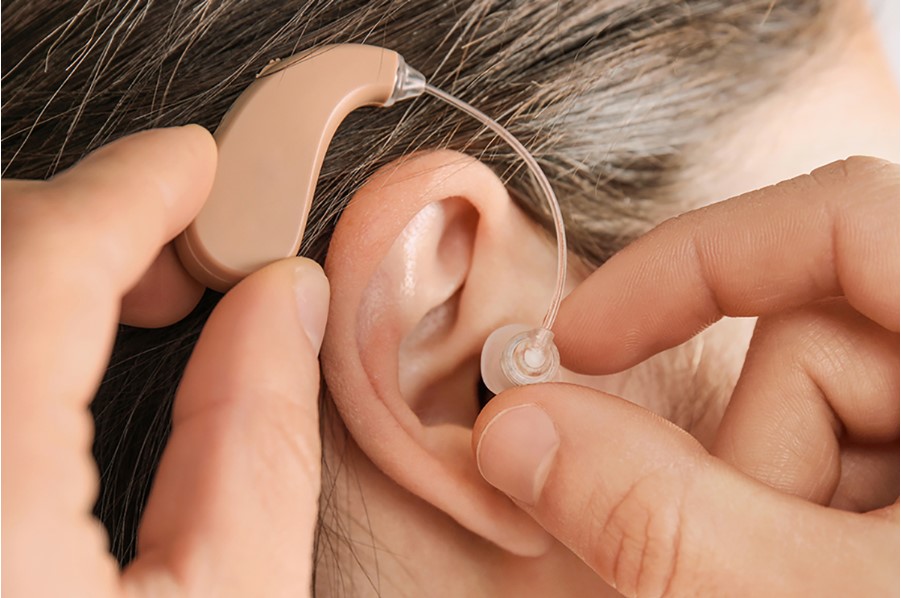Hearing aids advantage
Hearing aids are essential devices for individuals with hearing loss, offering a better quality of life by improving communication and sound perception. When choosing a hearing aid, one major consideration is the power source: battery-powered or rechargeable. Both types have their advantages and disadvantages, and understanding these differences can help you select the one that best suits your needs.
1. Power Source and Convenience
- Battery-Powered Hearing Aids: These devices use disposable batteries, typically zinc-air batteries, which need to be replaced every few days or weeks, depending on usage and size of the battery. Sizes range from 10 (smallest) to 675 (largest), with larger batteries lasting longer.
- Advantages:
- Batteries can be replaced instantly, avoiding downtime.
- Widely available at pharmacies and electronic stores.
- Generally, the devices are lighter because they don’t contain rechargeable components.
- Disadvantages:
- Requires regular maintenance to replace the batteries.
- Ongoing cost for purchasing new batteries.
- Environmental waste due to the disposal of spent batteries.
- Advantages:
- Rechargeable Hearing Aids: These come with built-in rechargeable batteries, which are recharged via a docking station or a USB charger. Most modern rechargeable hearing aids use lithium-ion batteries, providing a full day of use after a single charge (often overnight).
- Advantages:
- No need to constantly replace batteries.
- Environmentally friendly due to reduced battery waste.
- Convenient for users who might have difficulty handling small batteries.
- Disadvantages:
- The hearing aid must be charged regularly.
- Limited to the battery’s lifespan; typically, a rechargeable battery will need replacement after 4-5 years.
- If the device runs out of charge during the day, immediate use is not possible unless charged again.
- Advantages:
2. Durability and Performance
- Battery-Powered Hearing Aids: With replaceable batteries, these hearing aids often have a consistent power supply, but the device performance may fluctuate as the battery loses charge. The batteries are generally more affordable upfront.
- Rechargeable Hearing Aids: These hearing aids are optimized for consistent performance throughout the day. Lithium-ion batteries tend to maintain their full capacity for longer durations, but the eventual battery replacement can be more costly than disposable options.
3. Environmental Impact
- Battery-Powered Hearing Aids: Since disposable batteries need frequent replacement, they contribute significantly to electronic waste. A single user may go through hundreds of batteries over a few years.
- سمعک نامرئی بدونباتری: These are more eco-friendly, as they reduce the need for disposable batteries. While the rechargeable batteries will eventually need replacement, they typically last several years before disposal.
4. Cost Consideration
- Battery-Powered Hearing Aids: These devices tend to be less expensive initially, with prices ranging from $500 to $3,000 per hearing aid, depending on features and brand. However, the cost of purchasing batteries over time adds up. A pack of batteries costs around $10 to $20, and a single battery may last anywhere from 3 to 14 days, depending on usage.
- Rechargeable Hearing Aids: Rechargeable models are typically more expensive upfront, ranging from $1,000 to $4,000 per hearing aid. However, the long-term savings come from not needing to purchase disposable batteries frequently.
5. Available Models
Here’s a look at some popular models for both types of hearing aids:
- Battery-Powered Hearing Aids:
- Oticon Opn S – Known for exceptional sound quality and noise reduction.
- Phonak Audeo Marvel – Offers Bluetooth connectivity and direct streaming.
- Widex Evoke – Utilizes machine learning to adapt to different sound environments.
- Rechargeable Hearing Aids:
- Signia Pure Charge&Go X – Features built-in rechargeable lithium-ion batteries and advanced sound processing.
- ReSound LiNX Quattro – Comes with a powerful rechargeable battery and offers full connectivity to smartphones.
- Phonak Audéo Paradise – Provides superior sound quality and rechargeable battery options.
6. Convenience and Lifestyle Considerations
When choosing between battery-powered and rechargeable hearing aids, it’s important to consider your lifestyle and daily routines. For individuals who travel frequently or have unpredictable schedules, rechargeable hearing aids may provide the convenience of not worrying about carrying spare batteries. With a full charge lasting an entire day, these devices are ideal for those who prefer simplicity and a low-maintenance solution. On the other hand, if you’re someone who doesn’t have regular access to charging facilities or tends to forget to charge devices, battery-powered hearing aids may offer more flexibility since you can quickly swap out a dead battery with a fresh one.
7. Technological Advancements and Future Trends
Technological advancements in both battery-powered and rechargeable hearing aids continue to push the boundaries of what these devices can offer. Rechargeable models are increasingly equipped with fast-charging capabilities, allowing users to get several hours of use from just a short charge. Furthermore, many rechargeable hearing aids now come with smart charging cases that double as protective carrying cases. As for battery-powered models, future trends are focused on increasing battery efficiency, allowing for longer use between changes. With hearing aid technology constantly evolving, both options are becoming increasingly sophisticated in terms of sound quality, connectivity, and ease of use.
Which One to Choose?
Your decision between battery-powered and rechargeable hearing aids depends on lifestyle, convenience, and budget:
- If you prefer the flexibility of replacing batteries quickly or need an option with a lower upfront cost, battery-powered hearing aids might be better.
- If you value environmental sustainability, prefer not to deal with frequent battery changes, and are willing to invest in a higher upfront cost, rechargeable hearing aids could be the right choice.
Pricing Summary
- Battery-Powered Hearing Aids: $500 – $3,000 per device; additional cost of $10-$20 per pack of batteries.
- Rechargeable Hearing Aids: $1,000 – $4,000 per device, with long-term savings from no battery purchases.
Both options offer a wide range of advanced features, including Bluetooth connectivity, noise cancellation, and custom sound programs, making them suitable for various degrees of hearing loss.
